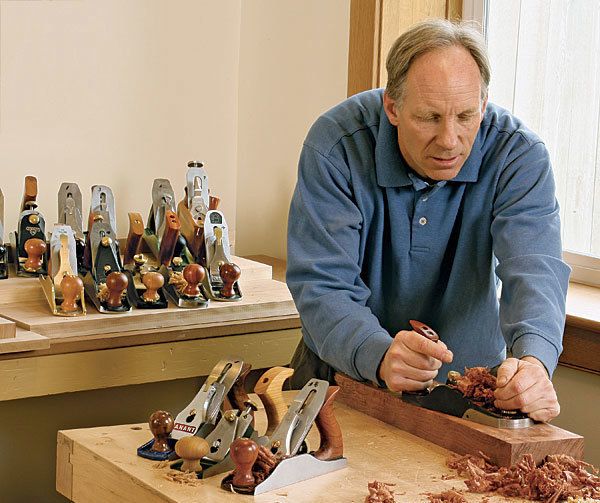Tool Test: Smoothing Planes
It’s the most important hand tool in the shop, and there are more great choices than ever
Synopsis: The smoothing plane is a woodworker’s essential tool: capable of leaving a pristine finish on any board, yet compact enough for general planing jobs like fitting and trimming parts. This review puts 14 smoothing planes to the test, judging fit and finish, honing each blade to a razor edge, and then planing pine, cherry, and white-oak boards, followed by bubinga, and an end-grain test. See how the following planes performed: Anant Kamal No. 4, Clifton No. 4, ECE Primus 711, Footprint No. 4, Groz No. 4, Kunz Plus No. 4, Lie-Nielsen No. 4, Lie-Nielsen No. 164 Low-angle Smoothing Plane, Stanley Bailey No. 4, Stanley Sweetheart No. 4, Veritas Bevel-Up Smoother Plane, Veritas Low-Angle Smooth Plane, Veritas No. 4, Wood River No. 4, V3.
From Fine Woodworking #219
Watch the video on how to choose the right smoothing plane.
If there is one handplane that every woodworker should have, it is the smoothing plane. It is, in essence, a finishing tool, stepping in where machines and rougher hand tools leave off. Properly tuned and sharpened, a smoothing plane can leave a pristine finish on almost any board. Yet it is still compact enough to be ideal for general planing jobs like fitting and trimming parts.
Because the smoothing plane is so essential, it’s important that you purchase the best one you can afford. To help you make this critical choice, I put 14 smoothing planes ranging in price from $33 to $350 through their paces, testing both of the common styles: bevel-down and bevel-up. First, I judged the overall condition out of the box. Then I sharpened the blade and put the plane to work. If needed, I diagnosed and tried to correct any problems with the tool. Not all of the planes needed help.
First a sharpening A plane must have a razor-sharp blade to work well, and it’s a bit much to ask manufacturers to ship them that way. So before use, I honed each blade. I started with 150-grit sandpaper on a granite block and progressed using Japanese waterstones, beginning with 1,000 grit, then 4,000 grit, and ending with 8,000 grit. And I gave each one my usual subtle camber (slightly relieved corners) to eliminate blade tracks (bevelups needed more camber). Bevel up or down, I honed each blade to an effective cutting angle of 45°. The ECE Primus was the only exception among the bevel-down planes, as its blade is bedded at 50°.
Then a torture test I used three boards for my tough test: pine, cherry, and white oak, each 1 1⁄2 in. thick by 20 in. wide by 30 in. long. I planed the face of each panel: pine first, then cherry, then white oak. I made the first series of passes diagonally across the surface. I made the second series with the grain to clean up the diagonal plane marks. I made the final series of passes with the grain and with the blade set for a lighter cut. After that, I judged how the final surface looked and felt.
For the full article, download the PDF below:
Fine Woodworking Recommended Products

Veritas Wheel Marking Gauge

Lie-Nielsen No. 102 Low Angle Block Plane

Marking knife: Hock Double-Bevel Violin Knife, 3/4 in.























Log in or create an account to post a comment.
Sign up Log in